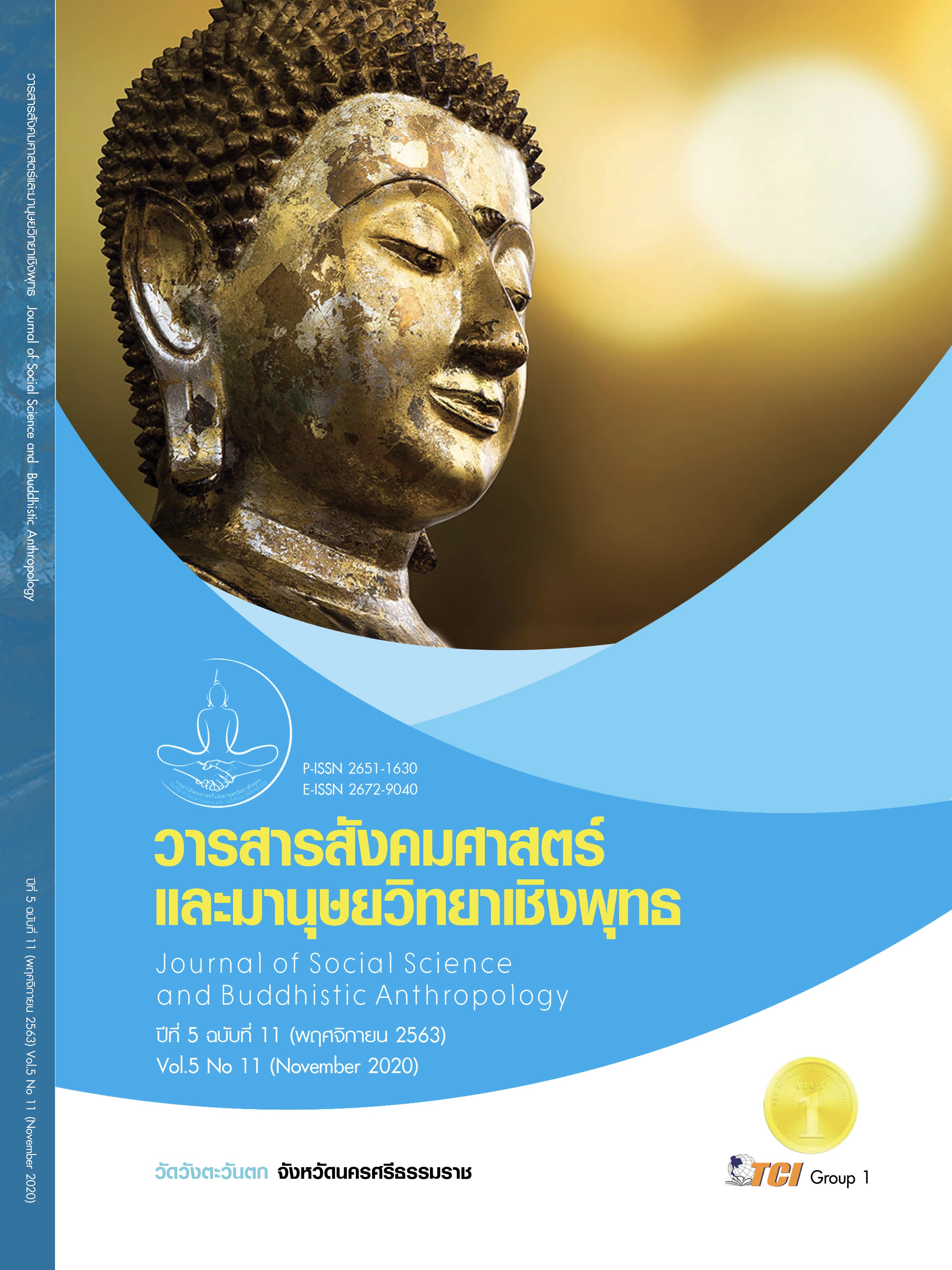WOMEN AND RELIGION: SOCIAL PERSPECTIVES ON RELIGIOUS ACTIVITY MANAGEMENT OF THERAVADA BHIKKHUNI IN THAILAND
Keywords:
Female, Religion, Social Perspective, Bhikkhuni, Religious ActivityAbstract
The purposes of this article were 1) to study the principles and development of the ordination of Theravada Buddhist Bhikkhuni in Thailand. 2) to study the social perspectives towards religious activities of Theravada Bhikkhuni in Thailand and 3) to analyze social perspectives on religious activities of Theravada Bhikkhuni in Thailand. This research was a qualitative research focus on document and field study. The sample consisted of 12 persons. The presentation was by the analytical description. The results of the research were found as follows: the principles and development of the ordination of Theravada Buddhist Bhikkhuni in Thailand. Most Thai women are ordained as Theravada Bhikkhuni in Sri Lanka. They are ordained by two main sects, namely the Bhikkhuni and monks. As for the Bhikkhuni who are ordained in Thailand, they are a combination of two main sects of monks and two denominations: Theravada and Mahayana sect. The status of Theravada bhikkhuni has not been recognized by the Thai Sangha. As the social perspectives on religious activities of Theravada Bhikkhuni in Thailand. Society sees the role of the keeper of the Dharma, spreading Buddhist principles, being social spiritual center, being a religious leader, and capable of attaining Dharma. The analysis of social perspectives towards religious activities of Theravada Bhikkhuni in Thailand. Society perspectives the religious activities of Theravada Bhikkhuni in Thailand that Buddhist Bhikkhuni can carry out Buddhist activities. And is suitable both the main role is to follow the dharma teachings Buddhist rituals and the propagation of Buddhism, the secondary role is social work promotion and conservation of arts, culture and environment.
References
เดือน คำดี. (2544). ภิกษุณีในพระพุทธศาสนา: การศึกษาเชิงวิเคราะห์. ใน โครงการวิจัยพุทธศาสตร์ศึกษา ศูนย์พุทธศาสน์ศึกษา. จุฬาลงกรณ์มหาวิทยาลัย.
ปรีชา ช้างขวัญยืน. (2541). สตรีในคัมภีร์ตะวันออก. กรุงเทพมหานคร: โรงพิมพ์แห่งจุฬาลงกรณ์มหาวิทยาลัย.
พระครูวาทีธรรมวิภัช. (18 กันยายน 2562). ผู้หญิงกับศาสนา: ทัศนะทางสังคมต่อการจัดกิจกรรมทางศาสนาของภิกษุณีเถรวาทในประเทศไทย. (พระครูโฆสิตวัฒนานุกูล, ผู้สัมภาษณ์)
พระธรรมปิฎก (ป.อ.ปยุตฺโต). (2544). ทัศนะของพระพุทธศาสนาต่อสตรีและการบวชเป็นภิกษุณี. กรุงเทพมหานคร: สำนักพิมพ์มูลนิธิพุทธธรรม.
พระพรหมคุณาภรณ์ (ป.อ.ปยุตฺโต). (2555). ตอบ ดร.มาร์ติน: พุทธวินัย ถึงภิกษุณี. (พิมพ์ครั้งที่ 4). กรุงเทพมหานคร: มูลนิธิพุทธธรรม.
พระมหากมล ถาวโร (มั่งคำมี). (2552). การวิเคราะห์บทบาทของสตรีในพระพุทธศาสนา: ศึกษาเฉพาะกรณีบทบาทของสตรีในสังคมไทยปัจจุบัน. ใน วิทยานิพนธ์พุทธศาสตรมหาบัณฑิต สาขาวิชาพระพุทธศาสนา. มหาวิทยาลัยมหาจุฬาลงกรณราชวิทยาลัย.
พระมหาชินวัฒน์ แสงชาตรี. (2548). ศึกษาวิเคราะห์บทบาทของภิกษุณีในสมัยพุทธกาล. ใน วิทยานิพนธ์ศิลปศาสตรมหาบัณฑิต สาขาวิชาปรัชญา. มหาวิทยาลัยขอนแก่น.
พลเผ่า เพ็งวิภาศ. (2561). การวิเคราะห์บทบาทของภิกษุณีในพระพุทธศาสนา. ใน ดุษฎีนิพนธ์พุทธศาสตรดุษฎีบัณฑิต สาขาวิชาปรัชญา. มหาวิทยาลัยมหาจุฬาลงกรณราชวิทยาลัย.
มหาจุฬาลงกรณราชวิทยาลัย. (2539). พระไตรปิฎกภาษาไทยฉบับมหาจุฬาลงกรณราชวิทยาลัย. กรุงเทพมหานคร: โรงพิมพ์มหาจุฬาลงกรณราชวิทยาลัย.
วุฒิชัย อ่ำบำรุง. (2550). สถานภาพและบทบาทของภิกษุณีในประเทศไทย. ใน วิทยานิพนธ์ศิลปศาสตรมหาบัณฑิต สาขาวิชาพุทธศาสนศึกษา. มหาวิทยาลัยธรรมศาสตร์.
อาคม สานุวิตร์. (2550). ทัศนคติของนักศึกษาหญิงในระดับอุดมศึกษาที่มีต่อการบวชภิกษุณีในประเทศไทย. ใน วิทยานิพนธ์ศิลปศาสตรมหาบัณฑิต สาขาวิชาภาษาอังกฤษ. มหาวิทยาลัยเชียงใหม่.
Deobold B. Van Dalen & William J. Meyer. (1962). Understanding Educational Research. New York: McGraw-Hill Book Company.








